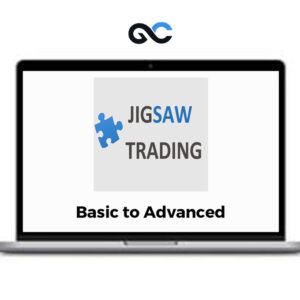Description
Download Proof | TradeSmart – How To Create Your Own Trading Strategy (864.7 MB)
![]()
TradeSmart – How To Create Your Own Trading Strategy
TradeSmart: How To Create Your Own Trading Strategy
Introduction to Trading Strategy Development Creating a trading strategy is a fundamental aspect of successful trading in financial markets. It involves a systematic approach to identifying opportunities, managing risks, and making informed decisions. Developing your own trading strategy allows you to tailor it to your preferences, risk tolerance, and financial goals. In this guide, we’ll explore the essential steps to crafting a robust trading strategy through a methodical process.
Understanding Market Analysis Before devising a trading strategy, it’s crucial to have a solid understanding of market analysis. This involves studying various factors that influence asset prices, including economic indicators, geopolitical events, and market sentiment. Technical analysis focuses on price charts and patterns, while fundamental analysis examines economic data and company fundamentals. Combining both approaches provides a comprehensive view of the market, aiding in the development of effective trading strategies.
Defining Your Objectives and Risk Tolerance One of the first steps in creating a trading strategy is defining your objectives and risk tolerance. Determine whether you’re seeking short-term gains or long-term growth, and establish realistic profit targets. Assess your risk tolerance by evaluating how much capital you’re willing to risk on each trade and your capacity to withstand potential losses. Clearly defining your objectives and risk tolerance sets the foundation for designing a strategy that aligns with your financial goals.
Selecting a Trading Style There are various trading styles to choose from, including day trading, swing trading, and position trading. Day traders execute multiple trades within a single day, capitalizing on short-term price fluctuations. Swing traders hold positions for several days to weeks, aiming to profit from medium-term trends. Position traders take a longer-term approach, holding positions for weeks to months based on fundamental analysis. Select a trading style that suits your schedule, personality, and risk preferences.
Identifying Entry and Exit Signals Developing clear entry and exit signals is essential for executing trades effectively. Entry signals indicate when to enter a trade based on specific criteria, such as technical indicators or price patterns. Common entry signals include moving average crossovers, breakouts from chart patterns, or oscillator readings reaching overbought or oversold levels. Exit signals determine when to close a trade to lock in profits or cut losses. Utilize stop-loss orders to limit potential losses and take-profit orders to secure gains.
Implementing Risk Management Techniques Risk management is a critical aspect of trading strategy development to preserve capital and mitigate losses. Determine the appropriate position size for each trade based on your risk tolerance and account size. Utilize risk-reward ratios to assess the potential return relative to the risk of each trade. Implement stop-loss orders to exit losing trades before losses escalate beyond acceptable levels. Diversify your trading portfolio across different asset classes and avoid overleveraging to reduce overall risk.
Backtesting and Optimization Before deploying your trading strategy in live markets, conduct thorough backtesting and optimization to assess its performance. Backtesting involves applying the strategy to historical market data to evaluate its effectiveness and profitability. Optimize the strategy by adjusting parameters, such as entry and exit criteria, to enhance its performance. Use robust backtesting software or trading platforms that offer backtesting capabilities to simulate real-market conditions accurately.
Monitoring and Adaptation Once your trading strategy is live, monitor its performance regularly and make necessary adjustments as market conditions evolve. Keep detailed records of your trades, including entry and exit points, position sizes, and outcomes. Analyze your trading results to identify strengths and weaknesses in your strategy and make informed modifications accordingly. Remain flexible and adaptable, willing to refine your approach based on changing market dynamics and personal experiences.
Conclusion Developing your own trading strategy is a challenging yet rewarding endeavor that requires careful planning, analysis, and discipline. By following a systematic approach and incorporating sound risk management principles, you can create a strategy that aligns with your financial objectives and trading preferences. Continuously evaluate and refine your strategy to adapt to evolving market conditions and improve your overall trading performance. With dedication and perseverance, you can become a successful trader capable of navigating the complexities of financial markets with confidence.











